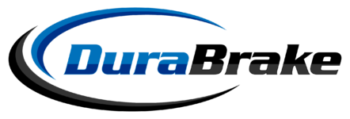📅 Effective Date: November 1, 2025
Summary: Imported medium- and heavy-duty trucks and truck parts will soon face a 25% Section 232 tariff under national security authority. This action builds on prior duties covering autos, auto parts, and key metal derivatives—materials that directly shape U.S. truck component costs.
For distributors and dealers, this represents a permanent shift in pricing, especially for parts that depend on imported metals or assemblies.
⚙️ Parts Most at Risk
While the tariff applies to all imported truck parts, the most affected are metal-intensive, globally sourced, and hard to retool domestically:
- Engines & Engine Parts – High-value, cast, and machined components rely on foreign inputs; major cost increases expected.
- Transmissions & Powertrain – Complex steel and aluminum assemblies make rapid re-sourcing difficult.
- Electrical Components – Sensors, harnesses, and modules face both import dependency and new compliance costs.
- Braking, Suspension & Bearings – High steel content and limited supply options will push prices upward.
- Chassis, Axles & Structural Parts – Directly covered under the new classification; most exposed to tariff escalation.
💡 These categories are vital for uptime and maintenance—any cost rise directly affects service networks and fleets.
💲 How It Hits U.S. Distributors and Dealers
Immediate Import Price Shock
From November, imported components will include the 25% duty in landed costs. Distributors must decide whether to pass on or absorb these increases.
Domestic Shadow Pricing
Domestic producers will likely mirror tariff-driven pricing, pushing costs higher across all product lines.
Dealer-Level Impact
Dealers will feel higher invoice prices by late Q4 2025, with catalog and retail pricing resets early in 2026.
📈 What Distributors & Dealers Should Do Now
✅ Lock In Pricing Early – Finalize contracts and POs before November 1.
✅ Review Supplier Exposure – Identify high-risk categories and diversify sourcing.
✅ Adjust Margins Strategically – Update pricing models to protect profits post-tariff.
✅ Communicate with Fleets – Explain timing and reasons for price changes to maintain transparency and trust.
🧭 The Bottom Line
The 25% Section 232 tariff signals a lasting change in truck part economics.
Metal-heavy, globally sourced components will face the sharpest and most persistent cost increases.
For U.S. distributors and dealers, the keys to weathering this shift are early preparation, proactive communication, and agile sourcing strategies.


